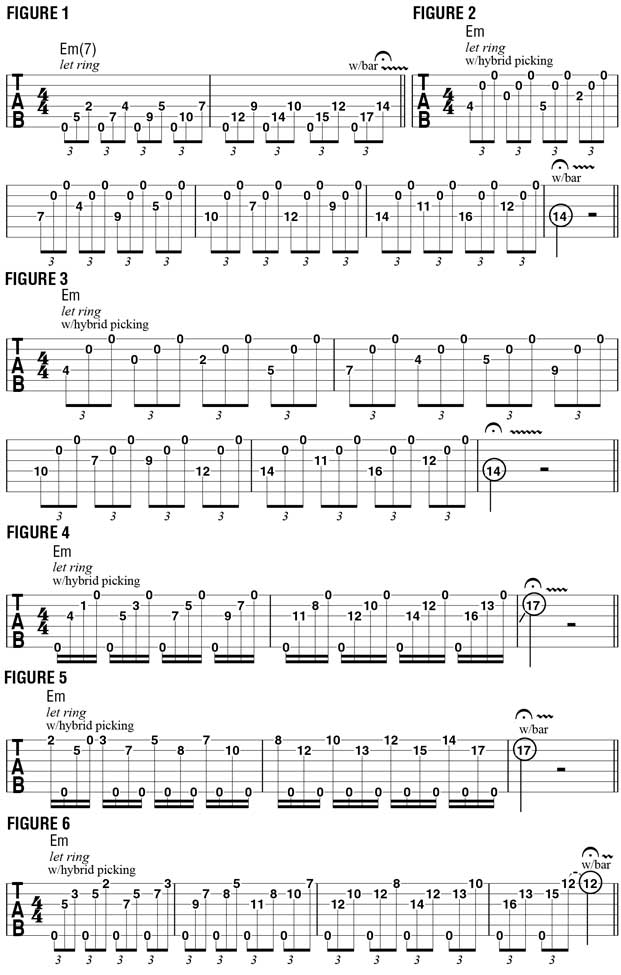Applying Second Intervals to Arpeggiated Riff Ideas
Learn how to use second intervals in different areas of the fretboard and on different string groups.

Chords and riffs can be built in a great myriad of ways, and the musical feeling of a certain pattern or harmonic structure is oftentimes defined by the intervallic relationship between the notes in the chord or riff.
One of my favorite intervallic sounds is that of second intervals, or seconds, wherein two notes, sounded together, are only a half step or whole step apart.
For example, if we were to play the notes E and F, the notes are a half step apart, which is a minor second, which in some cases can sound rather abrasive and dissonant. If we were to instead play E and F# together, the notes are a whole step, or major second, apart, and the resulting sound, while also dissonant, is less abrasive than that of a minor second.
In this lesson, I present a series of patterns that exploit the nature of second interval in different areas of the fretboard and on different string groups, while remaining diatonic to the key of E minor and the E natural minor scale, E F# G A B C D, which is intervallically spelled 1 2 b3 4 5 b6 b7.
In FIGURE 1, a series of seconds, sounded on the A and D strings, are repeatedly played against an open low-E pedal tone in an eighth-note triplet rhythm: on beat one, D and E are sounded, followed on beat two by E and F#, then F# and G, etc., moving up through the scale. I’m using a clean tone here and allowing all the notes to ring together, and I’m also employing hybrid picking (pick-and-fingers-technique) to emphasize the clarity of each individual note. The low E string is sounded with the pick, and the notes on the A and D strings are plucked with the index and middle fingers, respectively.
FIGURE 2 moves the pairs of seconds up one string group to the D and G strings, and follows the same type of pattern as FIGURE 1. FIGURE 3 offers a twist in that I alternate between ascending and descending seconds: moving from beat one to beat two and from beat three to beat four, the seconds ascend, but on beat three, they descend.
Let’s continue moving the pairs of seconds to the next higher string group, as illustrated in FIGURE 4, wherein the note pairs are sounded on the G and B strings. In this example, I switch to four-note groups of 16th notes, with each beat beginning with the open low E note and ending with the open high E.
FIGURE 5 places the seconds on the top two strings, and the new twist here is to alternate between these high notes and two open low E#, which are played on the 16th-note upbeats. Lastly, FIGURE 6 develops the concept a little further by incorporating seconds on two different string pairs, the G and B, and the B and high E, again played in eighth-note triplets against an open low-E pedal tone.
Now that you have the concept, try devising some seconds patterns of your own design.

Get The Pick Newsletter
All the latest guitar news, interviews, lessons, reviews, deals and more, direct to your inbox!









![Joe Bonamassa [left] wears a deep blue suit and polka-dotted shirt and plays his green refin Strat; the late Irish blues legend Rory Gallagher [right] screams and inflicts some punishment on his heavily worn number one Stratocaster.](https://cdn.mos.cms.futurecdn.net/cw28h7UBcTVfTLs7p7eiLe.jpg)
